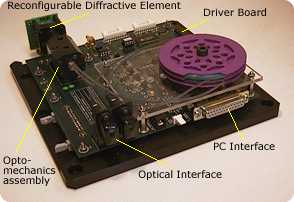
|
|
||||||||
A lightning switch
As more and more people connect up to the internet to buy products, search for the ideal holiday and look up information to help the kids with their homework, the communications industry must provide more and more high speed connections for all. The communications transmission networks that make all this possible are based on light beams carried over optical fibres, which can currently deliver 300 Gbits per second over several wavelength channels delivered over a single optical link. This is several times the whole of the UK's present phone lines.
Although the amount of information carried point to point by such a channel is vast, the problem comes at the junctions between one link and others. To route information between different channels (without slowing everything down by the use of electronics) requires light to be deflected from one channel to another. Until this can be done then a fully optical transmission network cannot be built. An efficient means for doing this, for large numbers of channels, i.e. by the development of an expandable optical switch, has only recently been discovered, and as is often the case, two methods have been produced concurrently.

A prototype holographic optical switch
The first optical cross-connect to be developed was announced by the American company, Lucent, last year. This uses a series of tiny mirrors that are moved to deflect the light beam to the appropriate path. Meanwhile, Professor Bill Crossland's group has developed an alternative type of switch that uses holograms to steer the beam, giving far greater precision with no moving parts.